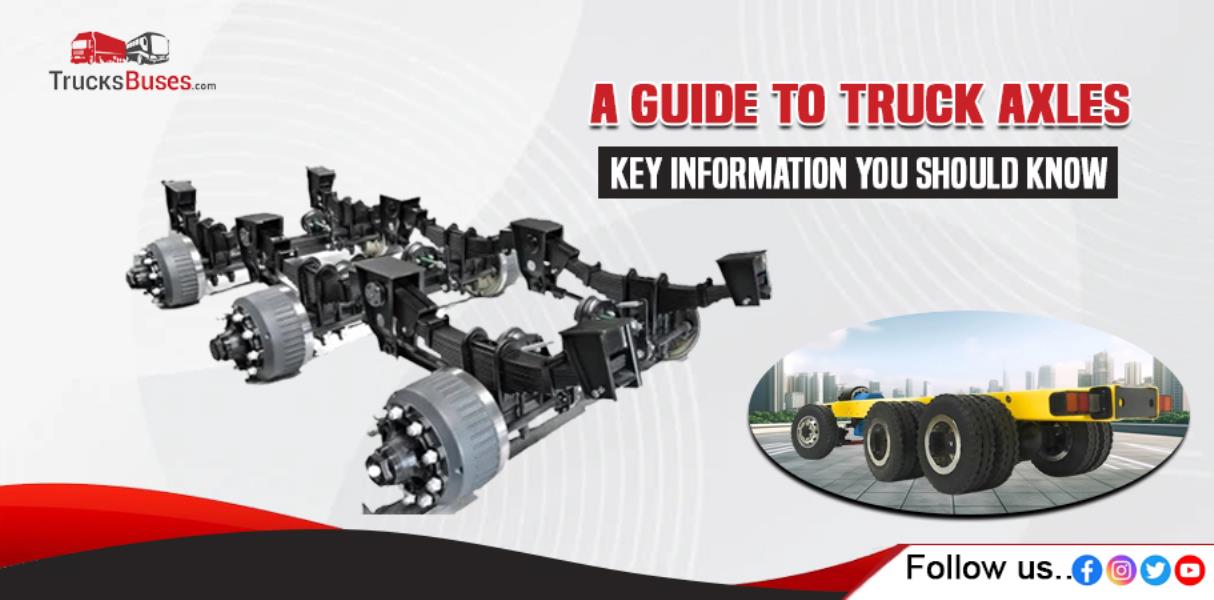A Guide to Truck Axles: Key Information You Should Know
By | Published Date : October 11, 2024
Truck axles play a crucial role in truck operation. Understanding them can help you better appreciate the mechanics behind heavy vehicles. This guide will explain axles, their types and configurations, and why they matter.

What is an Axle?
An axle is a shaft that connects the wheels of a vehicle. The ends of the axle fit into the wheel hub, allowing the wheels to rotate. Trucks typically have at least two axles, usually at the front and rear. Axles support the weight of the truck and keep the wheels spaced correctly.
Types of Axles
There are several types of axles, each designed for specific tasks. Here are the main categories:
1. Load-Carrying Axles
While all axles support the vehicle's weight, "load-carrying axles" refers specifically to those that do not steer or drive the truck. These axles help carry the weight of the truck and its cargo.
2. Steering Axles
Steering axles are located at the front of the vehicle. They help transmit the driver’s steering commands to the wheels. This allows the truck to turn in the desired direction.
3. PurposeAxles
Drive axles are usually found at the rear of heavy trucks. They transmit the power generated by the engine to the wheels, enabling the truck to move.
4. Axle Groups
Axles can be categorized into groups based on their distance from one another.
- Single Axle: If an axle is more than 2 meters away from other axles, it is classified as a single axle.
- Axle Group: If axles are less than 2 meters apart, they form an axle group.
5. Tandem Axles
A tandem axle consists of two axles that are less than 2 meters apart. These are very common on heavy vehicles and are essential for carrying heavy loads.
- Tridem Axles: A tridem axle is a group of three axles that are also less than 2 meters apart. These are less common than tandem axles and are typically found on vehicles designed to carry extremely heavy loads.
- Axle Configurations on Truck Tractors: For many years, the standard configuration for tractor semi-trailers has been a 6×4 drivetrain. In this setup, the rear tandem axle has drive axles. Recently, some companies have started using 6×2 configurations, where only one of the rear axles is a drive axle. The other serves as a load-carrying axle.
In a typical tandem axle, there are generally four wheels on each rear axle—two at each end.
Rigid Axles vs. Independent Suspension
Rigid Axles
Rigid axles have been used for many years. They connect the wheels directly and have been reliable for heavy loads. You can find them in all-terrain vehicles and most heavy trucks today.
Independent Suspension
Independent suspension allows the wheels to move separately from one another. This design offers better control, especially when navigating uneven terrain.
Why Learn About Truck Axles?
Understanding truck axles is important for several reasons:
- Registration Costs: In Quebec, the cost to register a truck, tractor-trailer, or farm vehicle over 3,000 kg is based on the number of axles. More axles can lead to higher costs.
- Load Limits: Load limits are often determined per axle, especially during thaw periods. Adding axles temporarily can increase load capacity.
How to Count the Axles
To find out how many axles a truck has, simply look at it from the side. Count each single or double wheel you see. Remember to include:
- The steering axle at the front.
- Any auxiliary lift axles.
- Attachments or detachable auxiliary axles.
Useful Terms for Distance and Measurement
When discussing axles, a few terms are helpful:
- Wheelbase: This is the distance between the front and rear axles of a vehicle.
- Track Width: The track width is the distance between the wheels on an axle, measured from the centre of the tyre’s contact with the ground.
Key Truck Brands and Models: Highlighting Axle Performance
Here are some popular truck brands and models that relate to our discussion on axles:
- Tata truck brand offers models like the Tata LPT 2518, which features robust axle configurations for heavy loads.
- Ashok Leyland has the Ashok Leyland CT 3718 Tipper, known for its durable drive axles and reliable performance.
- BharatBenz provides models like the BharatBenz 1217, designed with advanced axle systems for efficient handling.
- Eicher truck offers the Eicher Pro 6019, which has strong load-carrying axles suitable for various transport needs.
These trucks illustrate the importance of axles in heavy vehicle performance.
Related Blog -
Understanding Engine Oils for Trucks
Understanding Gearbox Systems